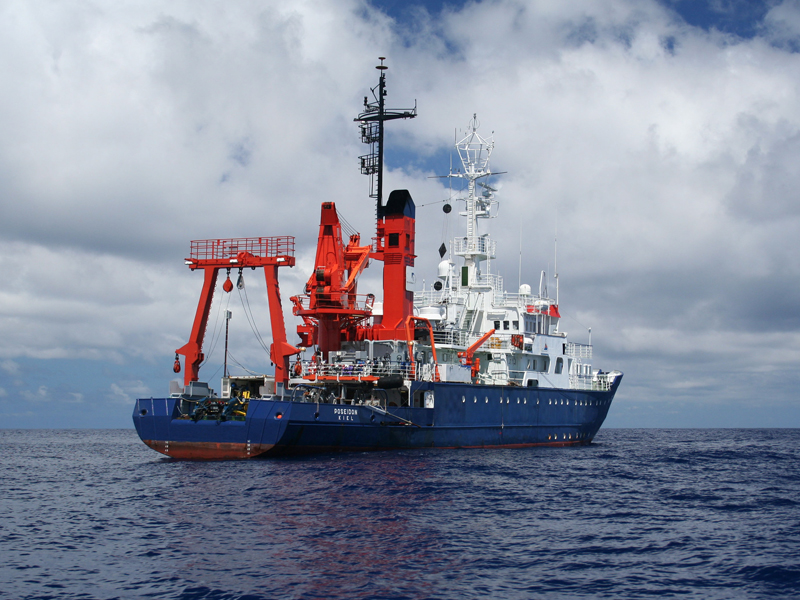POSEIDON POS427
- Area:
- Black Sea
- Time:
-
25.02.2012 - 19.03.2012
- Institution:
- GEOMAR
- Chief scientist:
- Jörg Bialas
The Black Sea is the largest anoxic basin worldwide and offers ideal conditions for the preservation of organic matter. Decomposition of the organic matter by bacteria or thermal cracking produces large amounts of methane gas within the Black Sea sediments. The Black Sea consequently constitutes a natural laboratory for the study of gas emissions and methane cycling in the marine environment as well as possible interactions with climate changes. With ongoing discussions about gas hydrate exploitation or the use of gas hydrate reservoirs for CO2 sequestration, a good understanding of fluid and methane circulation within continental margin sediments becomes a necessity. The large number of different types of fluid-venting systems in the Black Sea (both in shallow and in deep water) makes it an ideal target for investigations with mid-size research vessels such as RV Poseidon. We propose geoacoustic and 3D-seismic investigations of the northern Black Sea margin in the area of the Kerch peninsula (Crimea, Black Sea) for the characterisation of near-surface and deep fluid circulation. The margin south of Kerch peninsula is part of the Don-Kuban deep-sea fan and is characterised by numerous emissions of biogenic methane gas, while the peninsula itself is known for the presence of several mud volcanoes. The mud volcanoes are believed to be sourced from the 5-8 km deep Maikop formation as they expel methane of thermogenic origin. The Don-Kuban fan is under compression similar to the Sorokin Trough and unlike the Palaeo-Dnepr fan. It is expected that shallow methane emissions and mud volcanoes overlap on the upper slope and form a fluid-emission system that is different from both the Sorokin Trough and the Dnepr slope. The aim of our combined bathymetry, sidescan sonar and 3D-seismic investigations is to image the different fluid-expulsion systems. The study will answer some fundamental questions for understanding focused fluid migration systems in general. The process will assess the different geological processes that lead to hydrate formation and constrain the physical and lithological parameters that control it.



